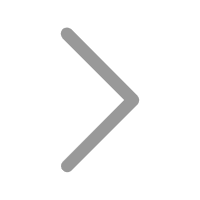
NEWS
 Categories
Categories
What is the difference between adapter and charger?
Is power adapter Same as power supply
Power Adapter
The charger is designed with high frequency power technology and uses advanced intelligent dynamic adjustment charging technology. The industrial frequency machine is designed with the traditional analogue circuit principle, the internal power devices of the machine (such as transformers, inductors, capacitors, etc.) are relatively large, and there is generally less noise when running with a larger load, but the model has stronger resistance performance in harsh grid environmental conditions, and is more reliable and stable than the high frequency machine.
Charger (charger) according to the design of the circuit operating frequency to divide, can be divided into industrial frequency machine and high-frequency machine. Industrial frequency machines are designed with the traditional analogue circuit principle, the internal power devices (such as transformers, inductors, capacitors, etc.) are larger and generally have less noise when running with a larger load, but the model is more resistant to the harsh grid environmental conditions, reliability and stability are stronger than high frequency machines.
The high frequency machine is a microprocessor (CPU chip) as the processing control centre, is a complex hardware analogue circuit burned into the microprocessor, the way the software program to control the operation of the UPS. As a result, the volume is greatly reduced, the weight is greatly reduced, manufacturing costs are low and the selling price is relatively low. The inverter frequency of high-frequency machines is generally above 20KHZ. However, high-frequency machines are poorly tolerated in harsh grid and environmental conditions, and are better suited to a more stable grid and less dusty, temperature/humidity-friendly environment.
High frequency machine and industrial frequency machine comparison: small size, light weight, high operating efficiency (low operating costs), low noise, suitable for office space, high cost performance (the same power, low price), space, environmental impact is small, relatively speaking, high frequency charger for copiers, laser printers and electric motors caused by the impact (SPIKE) and transient response (TRANSIENT) susceptible, due to The transformer of the I.F. machine isolates the mains from the load and provides safer and more reliable protection than the HF machine against the harsh environment of the mains. In some occasions such as medical treatment, the charger is required to have an isolation device, therefore, for industrial, medical and transport applications, the I.F. machine is the better choice. The choice between the two should be weighed and considered according to the different customers, installation environment, load conditions and other conditions.
Charger VS Adapter
1. The charger is specially designed to charge a device such as a battery or a super capacitor whereas The adapter is a device which is designed to provide required power supply to a device.
2. There is no AC to AC charger available because of all the batteries and super capacitors are charged with DC, not AC but the both AC to DC and AC to AC adapters are available in the market, they are used to provide power supply to DC and AC devices respectively.
3. Generally, the charger output voltage rating greater than the required voltage of the devices. For example, a 4.2V battery needs a 5V charger. On the other hand, adapters have the same output voltage rating as required of devices. For example, a 5V DC fan required 5V DC adapter.
Shenzhen Pengchu Industry Co.,Ltd.
















